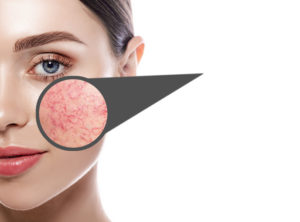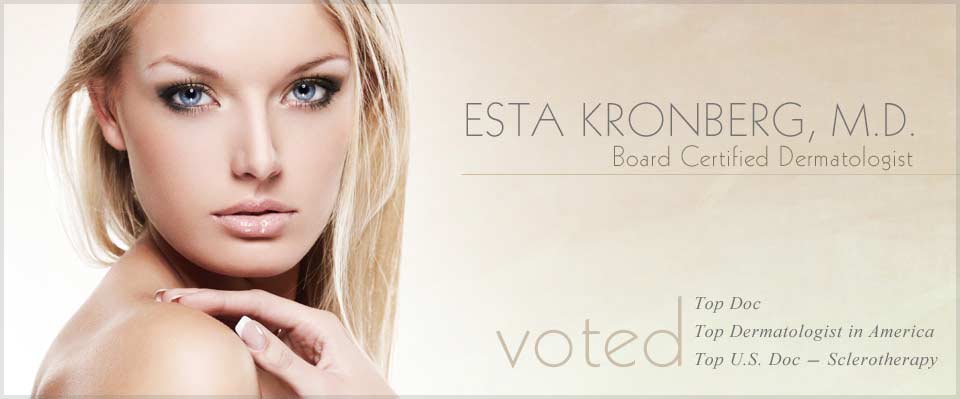 Rosacea is a misunderstood condition. Characterized by facial redness, bumps, and eye irritation, it affects people of all ages. Often the person doesn’t know they have rosacea, but simply think their skin is overly sensitive or that they blush easily.
Rosacea is a misunderstood condition. Characterized by facial redness, bumps, and eye irritation, it affects people of all ages. Often the person doesn’t know they have rosacea, but simply think their skin is overly sensitive or that they blush easily.
At Dr. Kronberg’s, she employs a variety of treatments for this frustrating, chronic skin condition.
What causes rosacea?
Rosacea is somewhat of a mystery, its exact causes still unknown. There is some evidence that the condition has a genetic factor. Sun exposure, and certain foods, drinks, and medications can dilate the blood vessels and lead to an outbreak.
It tends to occur in the facial areas that blush, so people who are more prone to blushing are more prone to rosacea. Triggers that cause rosacea flare-ups are emotional factors such as stress and anxiety, weather changes, sun exposure, alcohol consumption, exercise, and eating spicy foods.
Anyone can have rosacea. It typically starts at age 30 and is more common in people with fair skin, and those with a family history. In women, it often shows on the chin, in men on the nose.
What are the symptoms or signs?
Rosacea is frustrating for the patient, as it comes and goes without warning. The person’s skin may be clear for weeks or months, and then a sudden eruption occurs. A flare-up is characterized by facial redness, blushing, burning, red bumps, and little cysts. Sometimes, the normal facial skin color will not return after an outbreak, staying more reddened for the duration. The condition doesn’t go away on its own.
Diagnosis and treatment
There aren’t any tests to diagnose rosacea, so it is, understandably, under diagnosed. But that’s where the expertise of Dr. Kronberg comes into play. The condition is not curable, but once diagnosed, can be controlled.
Here are the methods Dr. Kronberg uses for treating rosacea:
- Topical creams — Creams such as metronidazole and azelaic acid control rosacea.
- Oral antibiotics — Tetracycline, amoxicillin, and doxycycline can reduce pimples and inflammation.
- Other medication — Topical steroids can reduce inflammation but can be used on a short-term basis only.
- Skin cleaners — While patients should not scrub their face excessively, over the counter and prescription cleansers can relieve symptoms.
- Laser treatment — Laser treatments target blood vessels on a person’s chest, neck, and face and have proven effective.
- Photodynamic therapy — In this therapy, a liquid is first applied to the skin and is then activated by a special light. Photodynamic therapy can reduce inflammation and improve skin texture.
- Chemical peels — For some patients, chemical peels control rosacea.
If you wonder if the redness on your skin is more than simple blushing, call Dr. Kronberg at (713) 771-8941. You may have rosacea.





Comments are closed.